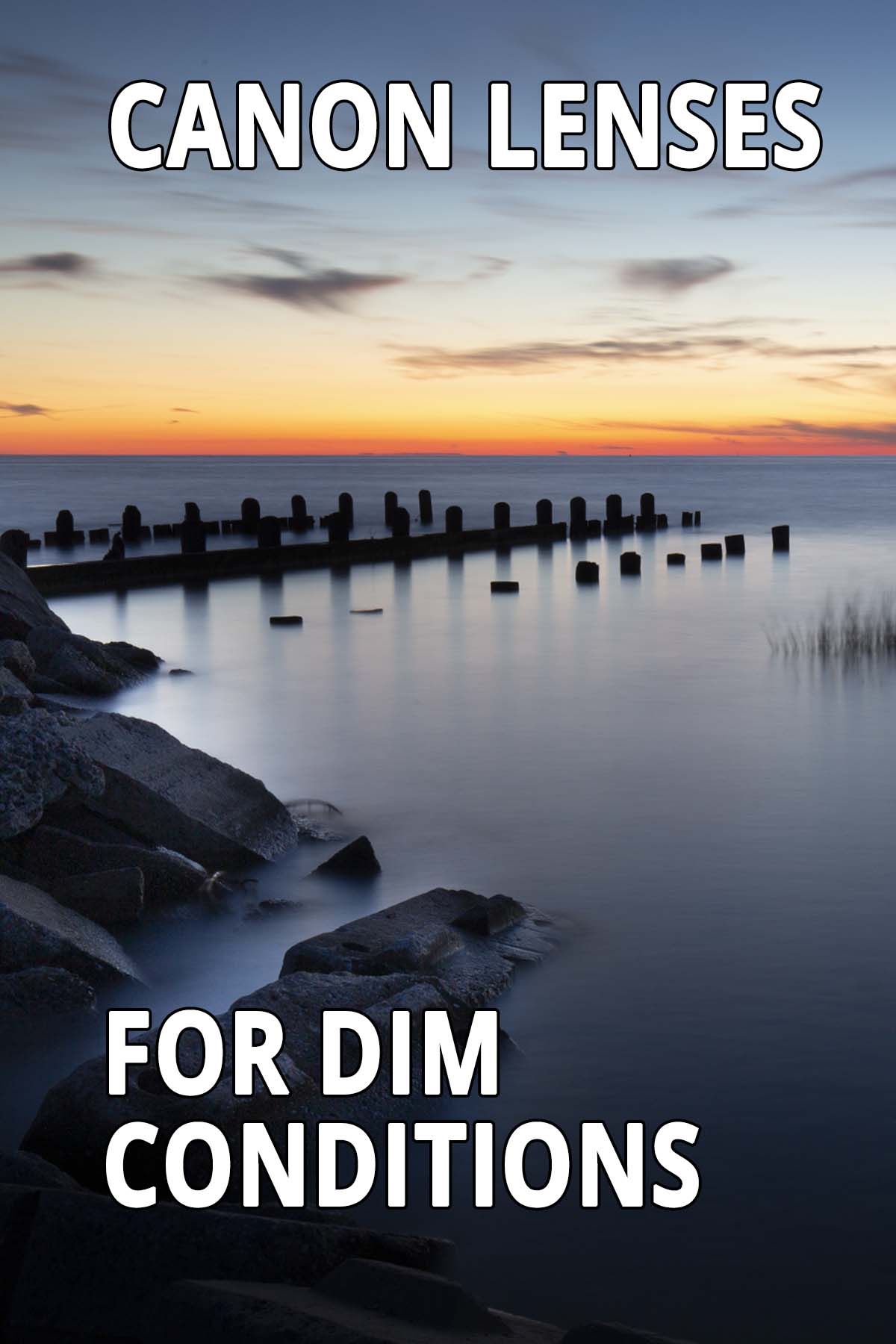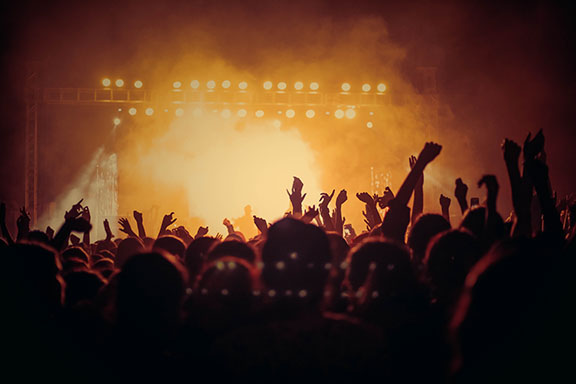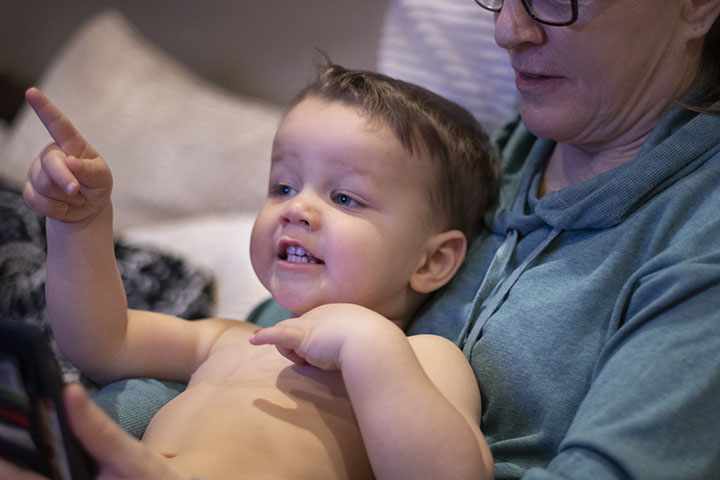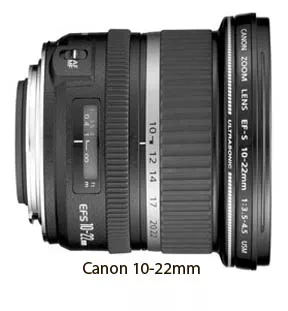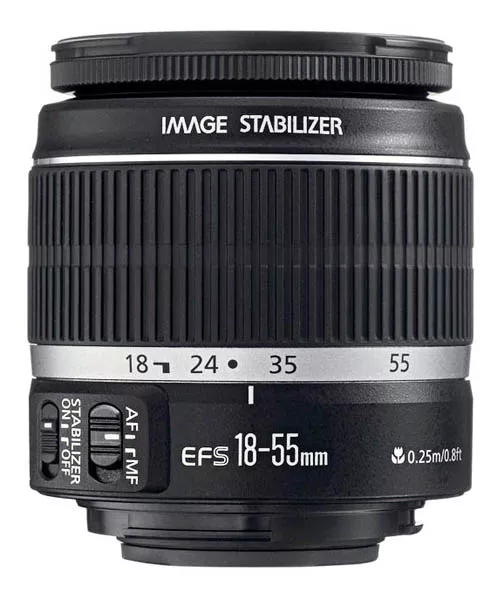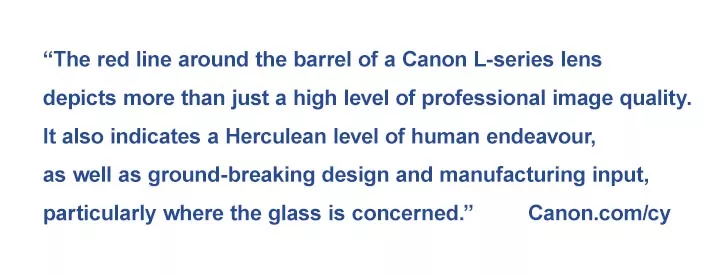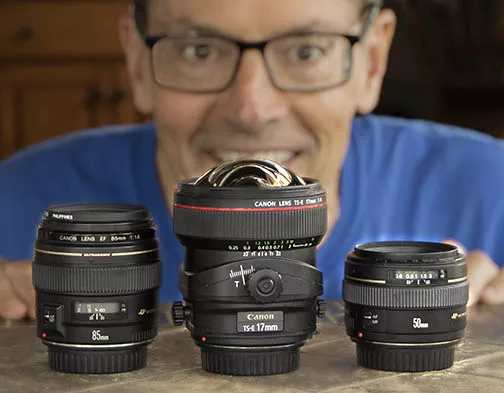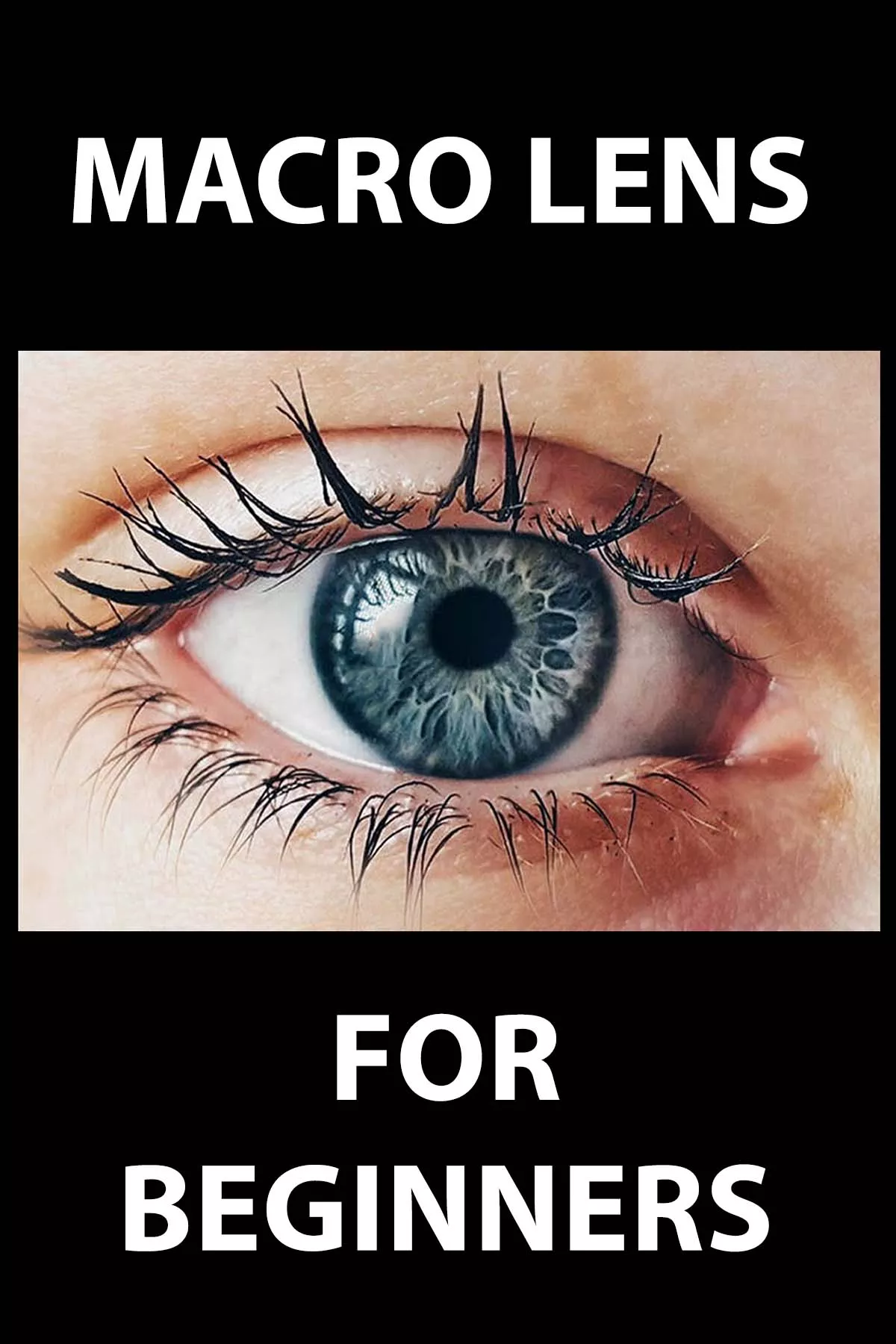Best Canon Lens For Low Light Photography
WRITTEN BY: BRUCE LOVELACE
UPDATED: FEBRUARY 14, 2024
You're looking for the right lens for shooting low light photography with your Canon but you're not sure which is the right one. The lenses with the largest apertures are the best for taking photos of dimly lit subjects. These include the Canon lenses that open up to maximum f/stop numbers of f/2.8, f.2.0, f/1.8, f/1.4, and f/1.2.
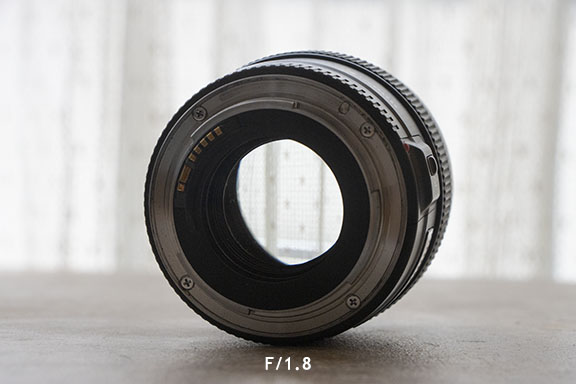 Large aperture lenses like this f/1.8 lens are best for dimly lit subjects.
Large aperture lenses like this f/1.8 lens are best for dimly lit subjects.With Canon having so many lenses to choose from it can be confusing as to which one is the best for you to use with low lighting. This post will give you the list of "fast Canon lenses" and conclude with the recommendation for best lens to use in a few specific situations that you may encounter.
Let's dive into the top ten list first and then look at the full list.
top ten canon lenses for dark conditions
These are Bruce, The Canon Geek's top 10 recommended Canon lenses for low light photography.
- Canon EF 16-35mm f/2.8. Wide and fast. Great for indoor small spaces.
- Canon EF-S 17-55mm f/2.8. Great, fast general purpose lens to use as a walk around.
- Canon EF-S 24mm f/2.8. Super small, compact, and sharp for APS-C Canons
- Canon EF 24mm f/2.8. For full frame Canons. most affordable fast wide lens.
- Canon 24-70mm f/2.8. Wedding photographer's favorite general purpose full frame.
- Canon EF 50mm f/1.4. Super fast for low lighting subjects. Cheap and light.
- Canon EF 85mm f/1.8. Professional portraits at a budget entrance point.
- Canon EF 100mm f/2.8. Macro. Superior portrait and macro lens.
- Canon 70-200mm f/2.8. The staple lens for portrait photographers. Works for close sports.
- Canon 300mm F/2.8. High performance sports lens at about 1/2 the price of the 400mm.
complete list of all canon low light lenses
Here's is the more complete list of Canon EF and EF-S lenses that work well in dimly lit situations.
*Canon EF-S 17-55mm f/2.8
*Canon EF-S 24mm f/2.8 IS
*Canon EF-S 35mm Macro
*Canon EF-S 60mm Macro
Canon EF 24mm f/2.8 IS
Canon EF 24mm f/1.4L II
Canon EF 35mm f/2 IS
Canon EF 50mm f/1.4
Canon EF 50mm f/1.8
* These are the smaller EF-S lenses for Canon APS-C "crop" cameras.
Canon EF 85mm f/1.8
Canon EF 85mm f/1.4
Canon EF 100mm f/2.8L IS Macro
Canon EF 300mm f/2.8
Canon EF 400mm f/2.8
Canon EF 16-35mm f/2.8
Canon EF 24-70mm f/2.8
Canon EF 70-200mm f/2.8
There are few discontinued lenses that are basically irrelevant that are not included on this list. All of the lenses are readily available, if not new, then in great shape as a used lens.
Canon RF LenseS For Dim Photography Conditions
No update of Canon's fast lenses would be complete without including a list of the newer RF mount Canon lenses for the "R" series of mirrorless cameras. These include all of the RF lenses with a maximum aperture of f/2.8 or larger.
Canon RF 15-35mm f/2.8 L IS USM
Canon RF 24-70mm f/2.8 L IS USM
Canon RF 28-70mm f/2 L USM
Canon RF 70-200mm f/2.8 L IS USM
Canon RF 100-300mm f/2.8 L IS USM
Canon RF 16mm f/2.8 STM
Canon RF 24mm f/1.8 Macro IS STM
Canon RF 28mm f/2.8 STM
Canon RF 35mm f/1.8 IS Macro STM.
Canon RF 50mm f/1.8 STM.
Canon RF 85mm f/1.2 L USM DS
Canon RF 85mm f/2 Macro IS STM
Canon RF 100mm f2.8 L Macro IS USM
Canon RF 135mm f/1.8 L IS USM
budget Canon lenses for dark conditions
You can save money on lenses for shooting in low lighting conditions by limiting yourself to one of the lenses linked to at Amazon in the adv. below. I like using both a fast 50mm f/1.4 and or an 85mm 1.8. On APS-C sized cameras they both make great portrait lenses.
As an Amazon affiliate Canon Camera Geek receives a small commission from qualifying purchases, at NO added cost to you.
How to get good exposure in low lighting situations
There are 3 ways to ensure that a subject that's under a low lighting situation can get enough light for a proper exposure and a nice looking photograph.
1. SHUTTER SPEED. Use a slower shutter speed to allow more light into your camera. This may add a little blurriness to the resulting image, depending on subject movement, camera movement, and focal length of lens. Overcome this with your camera's IS (image stabilization) setting or use a tripod.
2. HIGH ISO. You can decreases the amount of light needed to strike the camera sensor by using a higher ISO setting. This may affect image quality by adding some digital noise to the resulting photo. Depending on the level of ISO and the processing of the image you can use software to reduce the noise and sharpen your photo.
3. APERTURE. You can allow more light into the camera by using a fast lens that helps in low lighting situations. You can use a lens that has a large maximum aperture (like one of the ones listed in this post). The smaller the f/stop number, then the more light that can enter the camera.
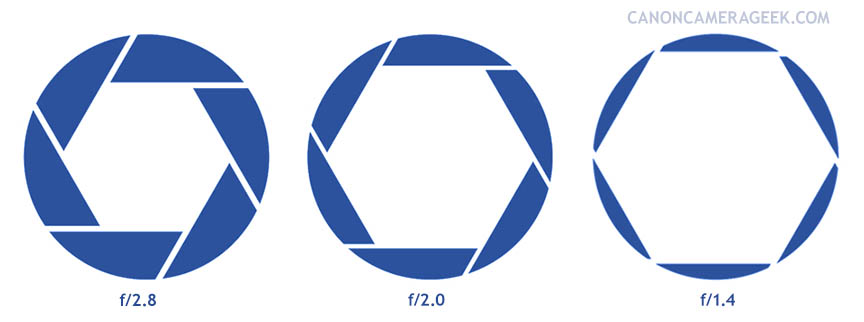 Lens opening with different apertures comparison
Lens opening with different apertures comparisonfast lenses for specific situations
Before we look at a few specific types of dimly lit subjects I do have a recommended general purpose low light lens for you to use with your smaller APS-C crop cameras and a recommendation for full frame sensor camera users.
These APS-C cameras included all the following Canon Rebel cameras, t3i,t6i, t4i, t7, t5, t7i, t5i, t8i, t6, SL 1, SL 2, SL 3, 7D, 7D Mark II, 77D, 50D, 60D, 70D, 80D, and 90D. Full frame include the entire 1D, 5D, 6D and mirrorless R series of Canon cameras.
I recommend the Canon EF-S 17-55mm f/2.8 lens. Although it's a little bit older, it has image stabilization and is the only zooming lens out of the few large maximum aperture Canon lenses that are designed for the hobbyist Canon shooter.
You can see in the list of low light lenses above, that all 3 of the other EF-S lenses are non-zooming prime lenses. The 17-55mm f/2.8 is the only large aperture zooming lenses Canon has for photo enthusiast camera users.
With the same just-one-lens idea for a full frame Canon, I recommend the Canon EF 24-70 f/2.8. That gives you a similar zoom range as the recommended EF-S 17-55mm lens mentioned above.
best canon lens for low light concert photography
Concert photography and similar indoor events can be a great challenge to take on as it can be crowded and the lighting can be both have high contrast and at times quite dim. The best lens should be a fast zooming lens with wide angle abilities. Both the Canon 24-70 f/2.8 and the Canon 16-35 f/2.8 are recommended.
Both are considered professional lenses and come along with professional price tags. The 16-35mm will give you a better wide angle view which is perfect for concert photography and other indoor event type of photography.
Both of these Canon lenses have more than 1 version with the most recent versions coming with a larger price tag. See the price below.
As an Amazon affiliate Canon Camera Geek receives a small commission from qualifying purchases, at NO added cost to you.
best low light lens for photographing Landscapes
Low-light landscape and nightscape photography, such as the Milky Way photo below, require lenses that have large maximum apertures and wide angle of views.
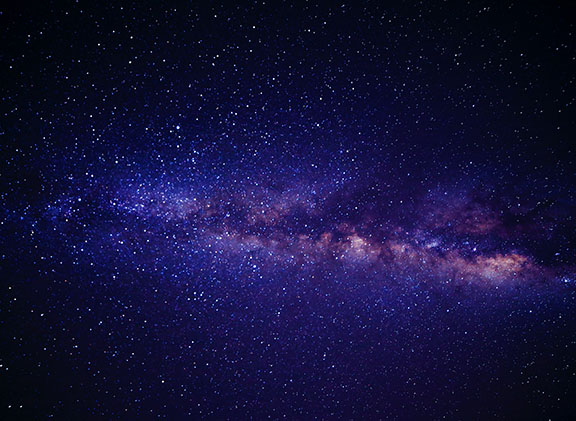 Photo by Miriam Espacio from Pexels
Photo by Miriam Espacio from PexelsFAST AND WIDE. To avoid using those super high ISO settings, you're going to want a wide angle prime lens that ideally opens up to f/2.0 as a minimum. Prime lenses give you the sharpest images when shooting wide open as compared to most zoom lenses.
I recommend a compromise in the Canon EF-S 24mm f/2.8 IS for crop camera shooters. It's not ideal at f/2.8, but it's a good starting lens for beginning photographers.
Its' very small and light due to its simple design. It has very good sharpness shooting wide open which is an absolute must-have feature for shooting the night time skies.
Ideally, if you can afford it, the Canon EF 24mm f/1.4L II is a great dark sky lens. It's super wide maximum aperture and wide enough angle of view make it work for either APS-C or full frame Canon cameras.
best canon lens for low light sports photography
Lenses that have a wide open aperture are good for shooting sports because they enable you to use faster shutter speeds to freeze the action. In low light situations, it's extra challenging and you sometimes have to adjust the ISO to a very high setting.
Most sports photography involves larger distances between you and the action. That means you need some decent telephoto power. The Canon EF 300mm f/2.8 is a professional lens with incredible performance..
Notching it up one additional step in magnification is the Canon EF 400mm f/2.8. This lens is only for those with a big balance in their checking account.
Both the 300mm and 400mm lenses work with either sized Canon camera body. Mounted on an APS-C camera you get additional 1.6 times narrower angle of view. With the 300mm lens, you'll get the view of a 480mm lens. With the 400mm lens, you get the view of a 640mm lens.
best canon lens for low light wedding photography
The number one Canon lens for wedding shooters is the Canon EF 24-70mm f/2.8 II. You can shoot at different focal lengths without having to change lenses. It's maximum aperture of f/2.8 throughout the zoom range allows you to shoot in less than ideal lighting situations.
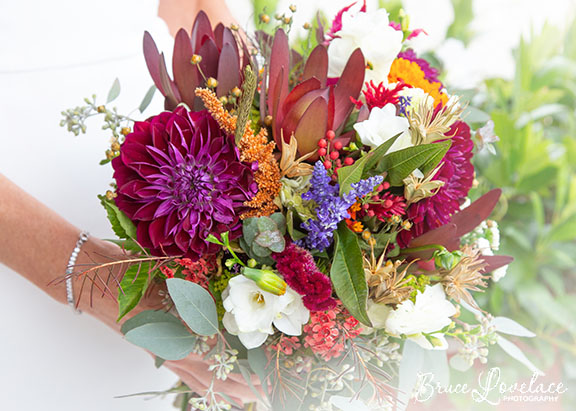 Wedding bouquet using natural lighting
Wedding bouquet using natural lightingThe 24-70mm f/2.8 lens is joined by the Canon 70-200mm f/2.8 as the two most popular wedding and portrait lenses by Canon. The 70-200mm lens is perfect when you want to take those detail shots and more distant perspectives like the formal full length poses of the bride.
low light portrait lens
The photo below was taken with another lens that's great for shooting portraits in dimly lit environments, my Canon 50mm f/1.4. For me, it's a fun return to using the same single focal length lens I started with over 40 years ago.
Although thought of more as a general purpose lens rather than a portrait lens, any one of the four Canon 50mm lenses works well for shooting portraits. The photo above is straight out of the camera. Shot with a crop sensor Canon 90D, you get the same angle of view as an 80mm lens. That essentially makes a 50mm lens a typical focal length for shooting portraits.
A fourth lens is worth mentioning as fast and good for shooting portraits. There are 3 versions of Canon's 85mm prime lens. I use the f/1.8 for low light shooting. Although you can't shoot large group shots without backing a bit further away from your subject, the 85 primes are an extremely affordable way to shoot professional portraits.
closing remarks on canon low light lenses
Canon makes several good lens choices for shooting in low light. If you want just one general purpose lens and you'd like to shoot a variety of low lighting situation then I recommend the 17-55mm f/2.8 for Canon APS-C shooters and the 24-70mm f/2.8 for full frame Canon camera shooters.
If you want to get one of the really wide open aperture lenses, then your budget will have to be much larger.
I hope you found his post helpful. The basic ideas for shooting in low light situations with Canon lenses also apply to the other camera lens brands. There are plenty to choose some. To search for an topic on Canon gear use the search box below. For related lens posts use one of the links below my signature.
Cheers!
Search for articles on this Site:


Bruce Lovelace is the publisher of Canon Camera Geek. Read more about him on the About Page. He also publishes how to articles and camera gear reviews at the Photography Tips website.
View some of Bruce's photos on Instagram and Flickr. Join the tribe of followers on YouTube. Bruce also runs photo workshops and provides 1 on 1 digital photography coaching.
Recent Articles
-
My Review of The 10 Best Canon R6 Mark II Features That Impressed Me
Apr 12, 25 08:51 AM
Beyond the Pixel: Discover the Game-Changing Features That Make the Canon R6 Mark II a Must Have Camera -
Canon RF 24-105 Lens Comparison. Guide To Which One Is Right For You
Apr 07, 25 12:47 PM
Which is the best of the 3 versions of the Canon RF 24-105mm Lens for Canon mirrorless cameras? What's The 24-105 Lens Good For -
3 Better Alternatives to Camera Bags From Canon. Helpful Guide To Bags
Apr 03, 25 11:51 AM
After searching for the top best selling Canon bags, I found 3 better alternatives to camera bags from Canon -
Canon 70-200 2.8 Tripod Collar. Article and Video of The Advantages
Apr 03, 25 11:02 AM
Some call it an optional accessory. I say a canon 70-200 2.8 tripod collar is a necessity when using this lens on a tripod or monopod. -
Running With The G1X Mark II, Acting Like a Kid, You Should Try This
Apr 03, 25 10:31 AM
Ever get a new "toy" and want to just play? I did.Got my new Canon compact camera. Went running with the G1x Mark II -
5 Best Canon Camera Types And Which One To Buy. Canon Camera Reviews
Mar 24, 25 01:21 PM
How do you know which is the best canon camera to buy? Don't get fooled.Read this first.
